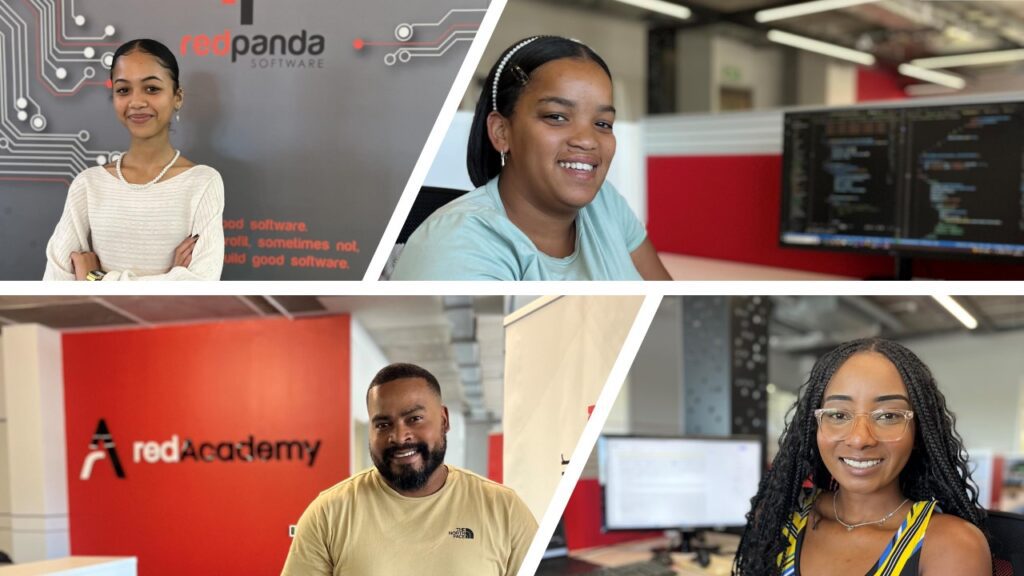South Africa’s recently released unemployment figures are alarming, especially considering the number of youth who are unemployed. The cruel irony is that the skills shortage, especially in software development as a highly skilled career, means companies are struggling to find highly skilled workers. One of the negative outcomes of this is that companies are forced to cannibalise each others’ skills which in turn makes the small pool of skills more, and sometimes, too expensive.
It is estimated that four out of every 100 school leavers will graduate with a university degree, meaning that businesses hoping to find developers from within that 4% are likely to continue struggling the way they are now. Universities are just not producing enough software developers quick enough, paving the way for alternative interventions. There’s no denying that demand-led training, where training programmes are designed and delivered based on specific industry demands, is the fastest route to changing the status quo.
Most interventions incorporate some kind of integrated work experience in their training modules, and these vary from remote integration to the learner needing to find an internship. We’ve found that a highly focused, proactive and reactive training with a finger on the pulse of real-time development needs, where learners are placed in live work environments, produces superb, work-ready software developers.
These young software developers that have an accelerated path into employment improve their own lives, their families’ lives and add value to their communities and the companies that employ them. There is a compounded knock-on effect when a single young person starts in an in-demand career such as software development.
The key to running successful interventions, beyond integrating top trainers and active developers who become mentors, lies in the recruitment and interview process. Certainly, from our perspective a great deal of effort is spent on finding candidates with a determined attitude and hunger to learn. This means that when we invest in them strongly, the reward is genuine intergenerational impact and increasing diversity in the software development industry. It’s about providing businesses with options to complement the current constrained skills pipeline.
Zaphea Greenslade is a 19-year-old graduate from redAcademy. She doesn’t need to wait years still to start a career because she has already been successfully integrated into employment as a junior software developer. Zaphea says she approached redAcademy as she was weary of being an unemployed young person – even with a university degree. Being able to take care of herself was important, saying: “redAcademy pays you a monthly stipend. I was able to help out around the house, pay my own travel, and even pay my student loan. I think that in itself also helps equip you with money-management skills.”
Asked about how her time at the academy helped her, she said: “The skills I’ve gained at the academy have prepared me for the real world. I’ve become familiar with a collaborative working environment, the concept of company cultures and values, various ways of management, and also how businesses operate in general.”
Phophi Muravha, 20, who also joined redAcademy after attaining matric, is also employed as a junior software developer. She says she “did not want to go to an institution that was only going to provide me with theoretical knowledge. I wanted to be in an environment that was going to require me to complete practical tasks as I am a practical learner. I also loved the fact that it was based in an office environment”.
Like Zaphea, Phophi was all too aware of the country’s unemployment realities. While she had the option to apply for a university degree she says: “going to an educational institution did not guarantee me a job after I was done, and with the country’s youth unemployment rate being so high, I did not want to take that risk with my future.”
Erin van Graan, currently studying at redAcademy didn’t have the opportunity to go to university, and at school preferred languages and history. “My education had no influence on the decision I made to pursue a learnership in software development,” she says.
It’s important to invest in learners as people, the way a company would invest in the career development of its employees. Doing so makes demand-led training so effective. In Erin’s words: “The level of investment in my professional and personal development is excellent. I learned about things I never knew could be true, or things I always wondered how it could happen,” she said. Intervention needs impact.
On the other hand, an environment built on equipping people with practical work skills can have a generational impact. Shayden Maseko, 32, was a rigger and crane operator. He missed out on a computer science degree at university and within a decade reached the ceiling in his chosen career. Being married with a child, he had a vision of providing more.
“By participating in this learnership, I’ve got a foot in the door in the software development field. It will allow me to have a career in this field of work,” he says. “You shouldn’t be afraid to change careers if you feel at any point what you are doing is not for you, with great risk comes great reward.”
Companies have a great opportunity to tap into work ready skills from demand-led training academies in addition to the existing university pipeline. This is incredibly exciting as it not only works towards addressing the skills gap, it also greatly impacts the lives of young people hungry to start their careers in technology.






